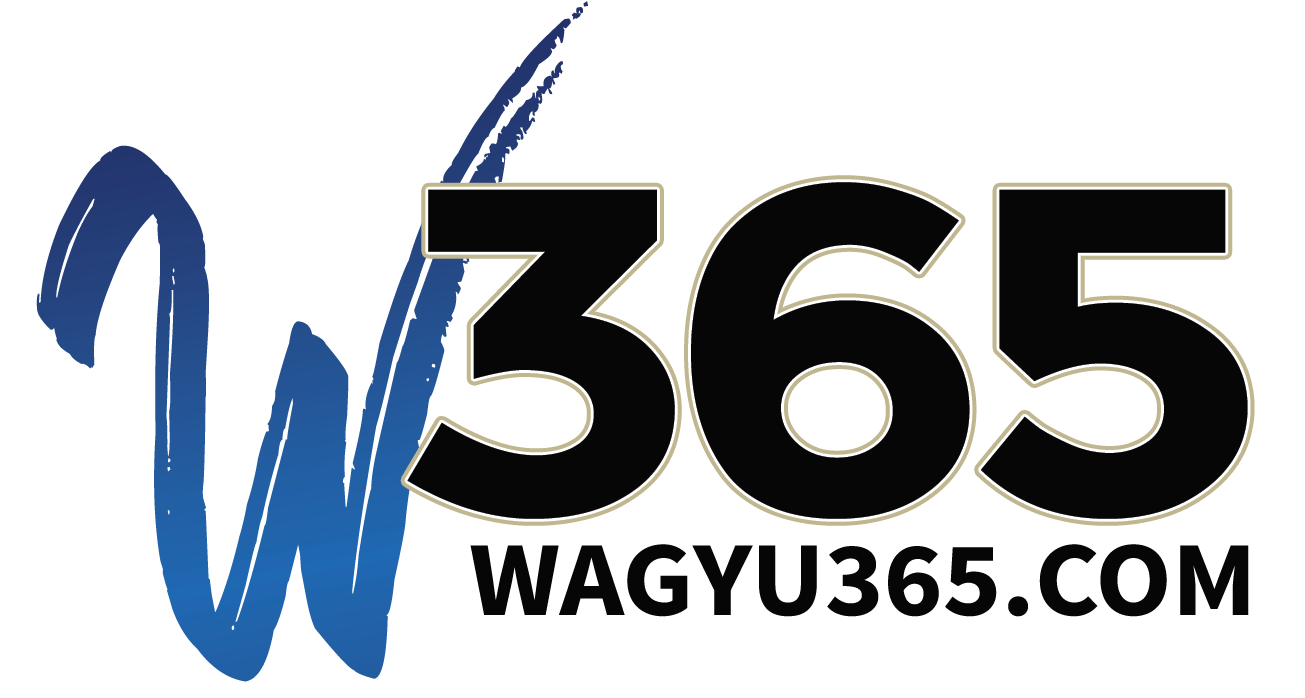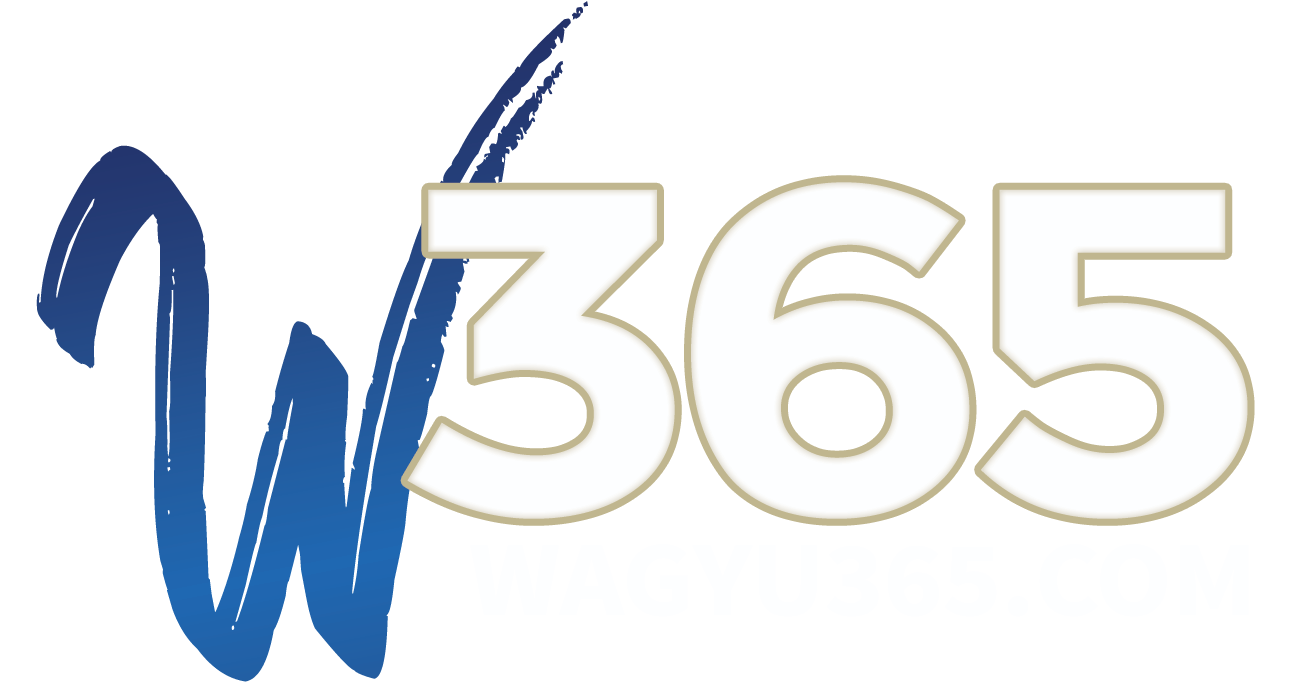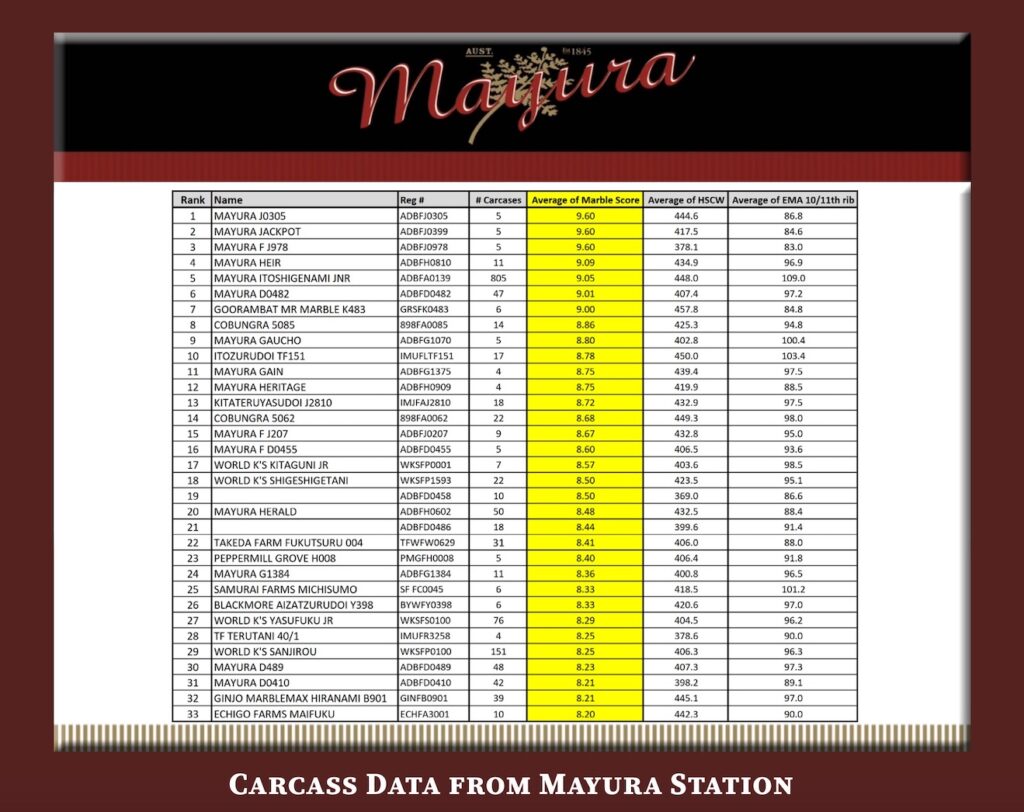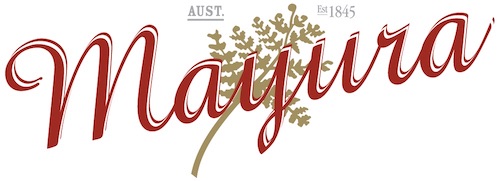
Mayura Station

Mayura Station was established in 1845 on the Limestone Coast of South Australia. The de Bruin family has owned and operated the business since 1980. Mayura Station began its journey with Wagyu in 1998 with the purchase of 25 fullblood Wagyu females from master breeder Shogo Takeda. Mayura imported these females live from the U.S.A. This marked the beginning of their transition from being a livestock producer selling cattle once per year to a meat producer where all animals leave as boxed beef. They are now a completely vertically integrated operation from “conception to consumption” as managing director Scott de Bruin explains. Mayura Station has 20 full time employees spread between the different areas of the farm: from the breeding herd, cropping and fodder production, feedlot and backgrounding, to ‘The Tasting Room’: the on-farm restaurant. Currently the herd consists of about 3,000 fullblood breeding cows and a total of over 8,000 head of fullblood cattle including cows, replacement heifers, and steers. Scott says the herd is averaging over an AUS-Meat marble score of eight with an average age at slaughter of 26 months. They have focused heavily on genetic and nutritional improvement to achieve these averages. This genetic and nutritional improvement has translated into increased profit in their branded beef business.
In 2000, Mayura launched its boxed beef brand and has grown to selling over 50,000 kg of retail beef each month. They currently market about 30% of their beef domestically and 70% is exported. The export market consists of stable long-term partnerships in China, Hong-Chong, Taiwan, Singapore, and Dubai. Mayura has three boxed beef labels, all of which are their grain fed beef. These are their Gold, Platinum, and Signature Series. The Signature Series is their flagship label with a BMS 9+, the Platinum label is a BMS of 8 and 9, and the Gold label is entry level BMS 5-7. Beyond these labels Mayura also operates ‘The Tasting Room’ on the farm property. This farm- to-table style restaurant and tasting room has become a massive success. It draws visitors from all around Australia and recently won the 2018 award for ‘Best Steak House in Australia’. Mayura Station uses ‘The Tasting Room’ to educate the public, its customers, consumers, and retail partners about what the Mayura brand is and what it represents. Mayura Station can showcase the entire farm and display exactly what their program is “from conception to consumption”. The Mayura brand’s success extends far beyond just what the ‘The Tasting Room’ has seen in 2018. Mayura was crowned the 2018 Trophy winner for the Delicious National Produce Awards for the “from the paddock” category. This is a massive achievement and essentially places them as the best tasting beef in Australia, after competing in the blind taste test of 7000 entries judged by Australia’s leading chefs and coming out on top! Mayura has a long history of beef excellence at the prestigious AWA branded beef awards, winning a Gold medal in 2012, 2013, 2014, 2015, 2016 and 2018. This herd is clearly producing some of the best beef in the Wagyu industry.
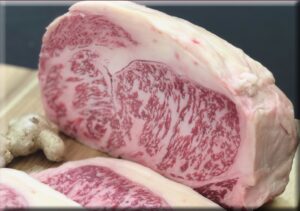
Mayura Jackpot Sired Carcass (Mayura Itoshigenami JNR Son)
The Mayura cow herd is managed in a traditional grazing system with both spring and fall calving groups. Calves are weaned at 6 months of age regardless of the season to ensure the same nutritional basis is given to all animals. This allows for even comparison of carcass and growth traits from year to year and season to season. After weaning calves are put on a predominantly silage-based diet balanced to maintain their growth through the backgrounding stage. Animals then enter the finishing feedlot at approximately 16 months of age and 500 kgs (1,100 lbs.). From there, they are fed for 300 days before being slaughtered at 24 to 26 months of age, with 26 months seeming to be the “sweet spot.” Scott says, “The introduction of silages into the diet from weaning on has been instrumental in reducing the age at slaughter and days on feed, while continuing to make gains in carcass quality.”
When Mayura started with Wagyu, Scott says “we were feeding steers to 36 months which was just not economical, and we couldn’t afford to be keeping stock on our books for 3 full years.” Thus, they developed this system with a higher level of nutritional/ feed management and have focused on genetic improvement at the same time. The genetic improvement has come through the well-planned reproduction program Mayura has developed and worked hard to put into practice.
The reproductive program and decisions around it are driven by the end product, the branded beef business. They calve in both the spring and fall to ensure commercial consistency and supply of steers for slaughter throughout the entire year. On the cow herd, Scott says Mayura does one round of fixed/timed A.I. for each of the two groups, the spring and fall calving cows. On average they are achieving greater than a 60% conception rate on the timed A.I. program. Following this, specifically selected bulls are turned out for the following two heat cycles to clean up the cows that are still open. With a heavy focus on fertility, cows that do not fall pregnant from this program are culled from the herd each year. The cleanup bulls are high genetic potential sires that Mayura is interested in. They are selected based on a few factors such as pedigree, carcass results of their dams, and now genomics. While serving their immediate purpose of getting the cow herd pregnant, the high potential cleanup bulls are also completing another objective. Scott gets preliminary performance and carcass data flowing through the Mayura data system on them at the same time. Bulls that Mayura receives promising data on through this process are sent off site for semen collection. These sires are then used back in the system through the A.I. program to gather further progeny data. This progeny test system that Mayura is running has the objective of finding an outcross and complementing new sire to the current star of the program, Mayura Itoshigenami JNR (ADBFA0139). Mayura Itoshigenami JNR has made a name for himself within the Wagyu industry because of his outstanding carcass results and growth. In the Mayura program he is currently averaging a MS 9+, 109 cm2 (16.90 in2) EMA at the 10/11th rib, and 448 kg (985.6 lbs.) HCWT on over 800 carcasses all slaughtered at only 26 months of age and 300 days on feed. This outperforms the likes of TF 151, TF 148, Shigeshigetani, Kitaguni Jr, Yasufuku Jr, Kitateruyasudoi 003, and Sanjirou among others within the Mayura program.
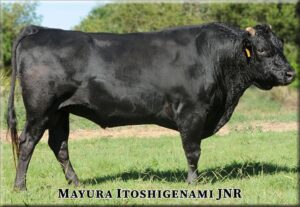
Mayura Itoshigenami JNR is a product of the superb breeding system run at Mayura Station. The overarching breeding philosophy that drives the program is to breed balanced, early maturing animals with superior carcass traits. The carcass traits Scott says they focus on are, first and foremost, marble score, with eye muscle area and carcass weight right behind. They are also beginning to look at marble fineness. Scott says that, “one of the keys to unlocking the value in your carcasses is through eye muscle area”. In the last five years Mayura has gained an average of 5.5kg of eye muscle area across all their carcasses. That is a value increase of $550 per carcass! Mayura works predominantly on a rotational breeding program as Shogo Takeda made famous, classifying their sires into groups A, B, C, and D based on their traits and breeding around the circle to maintain balanced cattle. For recessive traits, their current strategy is to attempt to breed carriers to free sires, with the exception to the rule being Mayura Itoshigenami JNR. In his case any potential loss in performance from affected cattle is outweighed by the increase in carcass value and profitability that he brings. Their entire breeding and genetic improvement strategy is only made possible because of the data they collect.
One of the primary objectives at Mayura Station is to collect credible data from the production system. This is extremely important because this data drives the decision making on sire and dam selection within the breeding program. Scott highlights several areas of importance in a credible data collection system. These areas include a consistent feeding/nutrition program, consistent days on feed, management groups by birth date, quality linkage sires, and minimum number
of carcasses for sires and dams. Nutrition and the feeding program should not change from year to year, so calves need to be weaned at the same age regardless of the season. Animals need to have the same days on feed to be compared, you cannot compare animals that were fed for 300 days versus animals fed for 500 days. Quality linkage sires are sires with high reliability and have been used across a wide variety of herds. This allows for benchmarking and cross-herd comparisons. Scott says a good example of a quality linkage sire is World K’s Michifuku. He also adds that the more quality linkage sires you can use, the better. The minimum number of carcasses Scott suggests for any kind of reliability in decision making is 10 for natural service sires, 50 for A.I. sires, and 2 for dams. Management groups should be used to ensure animals are competing against peers within their same age group. One final note Scott adds is that you should be prepared to share your data, as peer analysis is critical to assess the accuracy of your data and benchmark how your herd is performing. These practices have been put into place at Mayura Station and are now paying huge dividends in allowing for rapid genetic progress.
Through this data collection system Mayura has been able to identify
their top 1% females based on actual carcass data. Scott has realized the key to producing the next great sire is your females. For this reason, top 1% females based on carcass data along with high genomic testing females form the elite donor program at Mayura. These females undergo extensive E.T. production with the goal of producing the next generation of elite sires. These sires will ideally be both outcross and complimenting to the current genetics within the Mayura herd. High carcass merit sires that they are currently using within the E.T. program include World K’s Kitaguni Jr, TF 151 Itozurudoi, Kitateruyasudoi 003, and of course Mayura Itoshigenami JNR.
Sires that Scott particularly likes in terms of carcass merit are the “king” of the herd – Mayura Itoshigenami JNR, TF 151 Itozurudoi, World K’s Shigeshigetani, Kitateruyasudoi 003, and World K’s Kitaguni Jr to name a few. Beyond carcass merit, Scott says that Mayura Itoshigenami JNR and TF 151 also make amazing cows. He currently has over 500 daughters of Mayura Itoshigenami JNR in the herd. Scott uses Mayura Itoshigenami JNR wherever he gets the chance. If a cow does not have Itoshigenami in her pedigree she gets mated to him. Other sires Scott highlights as making great females are Itohana 2, Westholme Hirashigetayasu Z278, and Ginjo Hiranami B901. These sires make great phenotype females with excellent maternal traits.
Two of the top individual cows within the herd based on carcass data are Wagyu Genetics Hikohime D8223 (WGWFD8223) and Mayura G0560 (ADBFFG0560). D8223 is a TF 151 daughter out of an Overflow Kaneyama (Haruki 2 x Suzutani) behind which is Michifuku and the Hikokura maternal line tracing back to the super matriarch cow TF Hikohime 3/2. This great pedigreed cow has produced four carcasses averaging MS 9+ on AUS-Meat, 115.33 cm2 (17.87 in2) EMA at the 10/11th rib, and 458 kg (1,010 lbs.) HCWT. Furthermore, recorded carcasses have averaged a predictive Japanese BMS of 11 on the MIJ carcass camera. The second cow G0560, is sired by Mayura D0482 (ADBFD0482) an up-and-coming sire in the Mayura program who is averaging AUS- Meat 9+ on 47 carcasses with extreme EMA. Behind her we find an extremely deep maternal sire stack of TF 148 x TF 151 x 001 x Michifuku x Takazakura (full sister to TWA Shikikan) x Suzutani. This amazing pedigree has produced 4 carcasses MS 9+ on AUS-Meat, 105.5 cm2 EMA 10/11th rib, and 427.75 kg. Scott says he loves the Suzutani maternal line and believes that Suzutani was the best female to have left Japan.
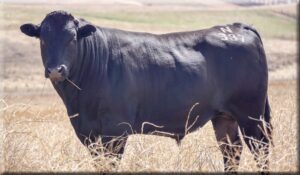
Mayura N0387 (ADBFN0387) (High ranking Itoshigenami JNR Son)
These are just two of the many elite females within the Mayura herd. According to Breedplan another top female from the herd is Mayura N0911 (ADBFN0911). She is a Mayura Itoshigenami JNR daughter out of a Terutani TF 40 dam with TF 146 Kikutsurudoi, Itomichi 1⁄2, TF 148 Itoshigenami, and the Hikokura maternal line behind that. Her Breedplan proof sports incredible figures of +2.3 MS, +4.4 EMA, and +24 Carcass Wt. Beyond these individual traits her indexes are an impressive +$246 SRI, +$213 FTI, and +$210 F-1TI. Tracing back to the Hikokura 1/10 cow, successful sires from this particular line of the Hikokuras include Itomichi TF 728, TF Yasutani 1012, LMR Akahige 8119U, LMR Sensei 817T, TF Takefuku 823, and Kikufuji-Doi TF 902. Yet another high genomic female in the Mayura herd is Mayura L1029 (ADBFL1029), and of course she too is sired by Mayura Itoshigenami JNR. She descends from the Chiyotake maternal line with a maternal sire stack of Itoshigenami JNR x Michifuku x TF 151 x TF 147 x JVP 400 x TF 150 x Terutani TF 40 x Chiyotake 8! This branch of the Chiyotakes has produced the legendary Macquarie Wagyu Y408, his popular son Macquarie Prelude 0495, Mayura Admiral A0113, and Sumo Cattle Co Haruki E180. She carries impressive EBVs of +6.5 EMA, +1.8 MS, and +32 Carcass Wt along with high growth traits. All of this translates to superb indexes of +$247 SRI, +$200 FTI, and +$190 F-1TI. These two females represent only a small sample of the impressive young females in the Mayura herd with 117 active females over +$200 on SRI, 58 over +$180 on FTI, and 39 over +$180 of F-1TI.
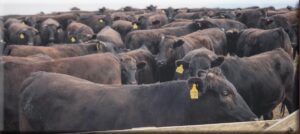 The young females in the Mayura herd illustrate perfectly the enormous potential for genetic growth the Wagyu breed contains. Mayura Station will likely play a large role in the global push for genetic progress as high genomic sons of Mayura Itoshigenami JNR become available. Within Mayura Station the future is bright far beyond Mayura Itoshigenami JNR with top females producing numerous other high potential sires. Currently in progeny testing at Mayura are sons of TF 151, Shigeshigetani, Mayura Itoshigenami JNR, Sanjirou, and more. Scott states that he looks to continue to make genetic gains in marble score, eye muscle area, and carcass weight while continuing to reduce days on feed and age at slaughter through a focus on early maturing cattle. Other areas of interest for the future include looking at the potential economic impact of recessive traits, increasing the herd fertility, and continuing to identify the top 1% females within the herd. You will want to pay attention to what is going on at Mayura Station because it is likely on the cutting edge of genetics and management practices!
The young females in the Mayura herd illustrate perfectly the enormous potential for genetic growth the Wagyu breed contains. Mayura Station will likely play a large role in the global push for genetic progress as high genomic sons of Mayura Itoshigenami JNR become available. Within Mayura Station the future is bright far beyond Mayura Itoshigenami JNR with top females producing numerous other high potential sires. Currently in progeny testing at Mayura are sons of TF 151, Shigeshigetani, Mayura Itoshigenami JNR, Sanjirou, and more. Scott states that he looks to continue to make genetic gains in marble score, eye muscle area, and carcass weight while continuing to reduce days on feed and age at slaughter through a focus on early maturing cattle. Other areas of interest for the future include looking at the potential economic impact of recessive traits, increasing the herd fertility, and continuing to identify the top 1% females within the herd. You will want to pay attention to what is going on at Mayura Station because it is likely on the cutting edge of genetics and management practices!
